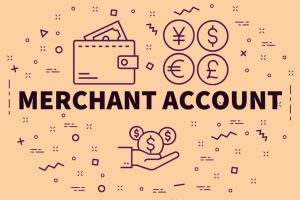
Perhaps on the buyer’s end, electronic payments are the fastest, easiest, and most trouble-free method available, which explains why it’s become so popular over time. But for as seamless and prompt as the payment option might be, there’s an intricate digital infrastructure that holds it all in place.
One of the reasons why electronic payment processing is as hitch-free as it is is because of merchant identification numbers, or simply MID numbers. These designated identification codes give each merchant’s account a distinct personality that allows a harmonious interaction between all of the different elements in the electronic payment processing ecosystem.
A merchant identification number or MID is essentially a digital address. It tells issuing and acquiring banks where a buyer’s payment should go. Without a MID, it would be impossible to find the account to funnel transaction funds into, and thus electronic payments would be unworkable.
In essence, a MID makes sure that any payments intended for your business go directly to your business and not some other merchant that works with the same bank as yours. This unique code identifies your merchant account and assures the buyer’s issuing bank that you’re a legitimate venture. A MID, therefore, allows and even to some extent facilitates the safe movement of funds from customers’ accounts to your own.
MID’s are issued by merchant acquiring banks. When you sign up and apply for a merchant account with a bank and you get approved, they set up your account and assign you a unique identifying code or MID that allows you to start taking payments into your account. If at any time you decide to switch to a different payment processor, your merchant ID number also changes.
So it helps to make sure you keep a note of the changes in case you decide to shift. Another thing to keep in mind is that a single business can have multiple identification numbers, especially if you have multiple branches whether on or offline that all accept electronic payments.
Although some people interchange the merchant identification number with a merchant ID, these two refer to completely different things. Essentially, the merchant account ID is your business’ unique identifier. This tells banks who you are. But they don’t necessarily designate where payments should be disbursed. You can think about it this way — the merchant account ID tells both issuing and acquiring banks who you are.

The merchant identification number designates where your digital account is for that specific branch that it represents. All of your merchant identification numbers fall under the same merchant account ID since they’re all operating under the same business. The only difference is that the MID’s designate all of the different branches of your venture.
So for example, if you ran a chain of grocery stores, your business would be identified by its merchant account ID. All of the different grocery store branches you have wherever they may be, as long as they’re registered under the same business, would all have their own unique merchant identification numbers.
Another way to leverage having a multi-MID structure would be to accommodate different workers in your business. For example, some beauty salons with multiple beauticians would assign a MID to each beauty specialist so as to accurately track payments and tips designated for each individual worker.
While it is possible to have a single MID for all of your branches, most businesses recommend designating a different MID for every distinct outlet you have. This just makes it easier to trace out where your cash flow is coming in from.
Another way to make it easier to organize all of your incoming payments would be the use of terminal identification numbers or TIDs. These are assigned to each individual payment terminal that your business uses. They exist both on and offline. If you operate a brick-and-mortar, your terminal identification number will be tied to a point-of-sale terminal — that gray little calculator-looking thing where buyers insert their credit or debit card to make a payment.
For online merchants, the TID is assigned to a digital terminal. The purpose of a terminal identification number is to let you track and record exactly where payments were made. This just helps improve documentation in case buyers want to review the transaction.
Again, you can have multiple TIDs depending on your business structure. For instance, a grocery store will have one merchant account ID, multiple MIDs per branch, and then multiple TIDs in each outlet. Overall, this creates a highly detailed record of exactly where and when payments were received.
If one of your MIDs is constantly subject to chargebacks, your acquiring bank can take action. In some cases, they can freeze the MID so that it’s rendered unusable for a period of time. For cases where chargebacks are significant, they can close the entire merchant account altogether.

That’s why it’s important to practice any necessary steps to protect your MID. And while some businesses think there’s nothing they can do to limit chargebacks, there are some strategies you can try, including:
As a business, it’s important to have all of your documents and information in order. So it’s ideal that you make a note of your MID/s to keep track of payments and to better understand the records that your bank might send your way. If you lost it somewhere in the paperwork and you’re looking for where you might find it, here are three places where it’s likely to appear:
Technically speaking, you can’t lose your merchant identification number since it’s going to be a digital fixture that’s attached to your merchant profile. What can happen though is that your bank may close your merchant account or freeze your MIDs so that they can’t accept payments. Again, this happens when there are too many chargebacks associated with your MID. That’s also why it helps to have multiple MIDs linked to your account.
If only one of the merchant identification numbers registers chargeback activity, then you can expect it to be the only one to get frozen. This allows you to continue taking electronic payments through other MIDs in your system.
However, if the chargebacks are linked to all of your MIDs, in that every merchant identification number is found to log a large volume of chargebacks over a period of time, then the merchant acquiring bank may choose to shut down your merchant account altogether.
There are lots of digital facilities that exist to streamline payments made electronically, and the merchant identification number is one of them. As a beneficial feature that facilitates transactions, the MID makes it easier to keep track of payments and to map out exactly how and where your business makes its money.